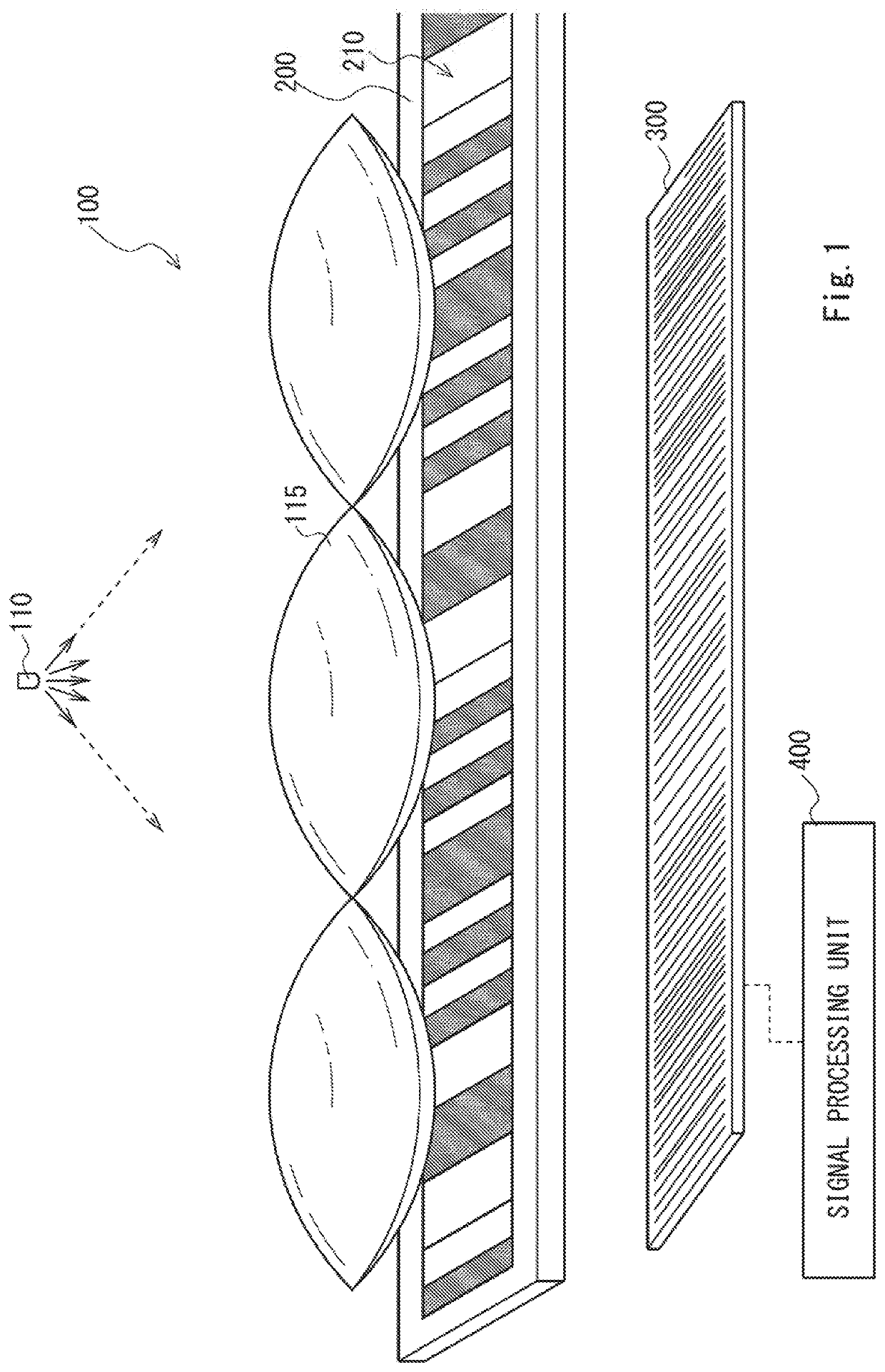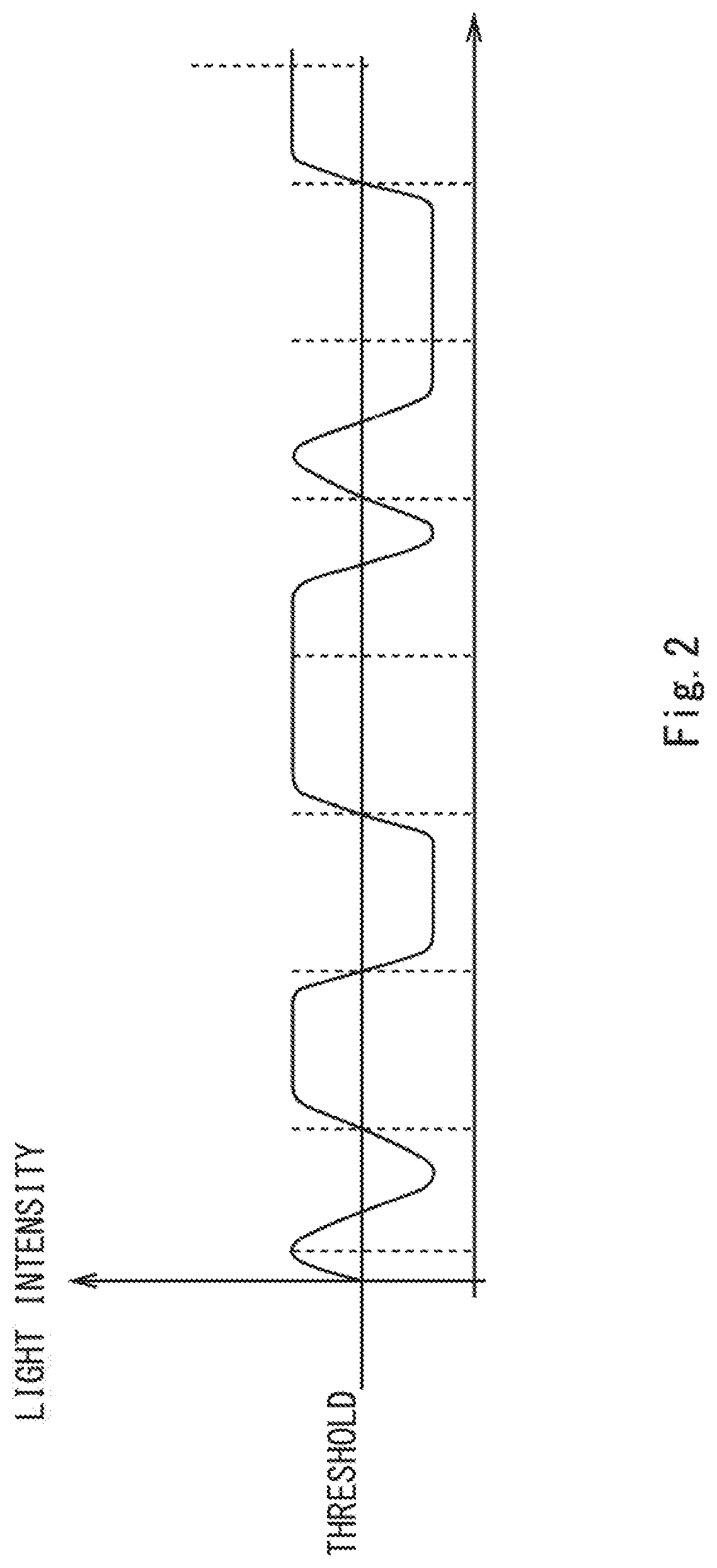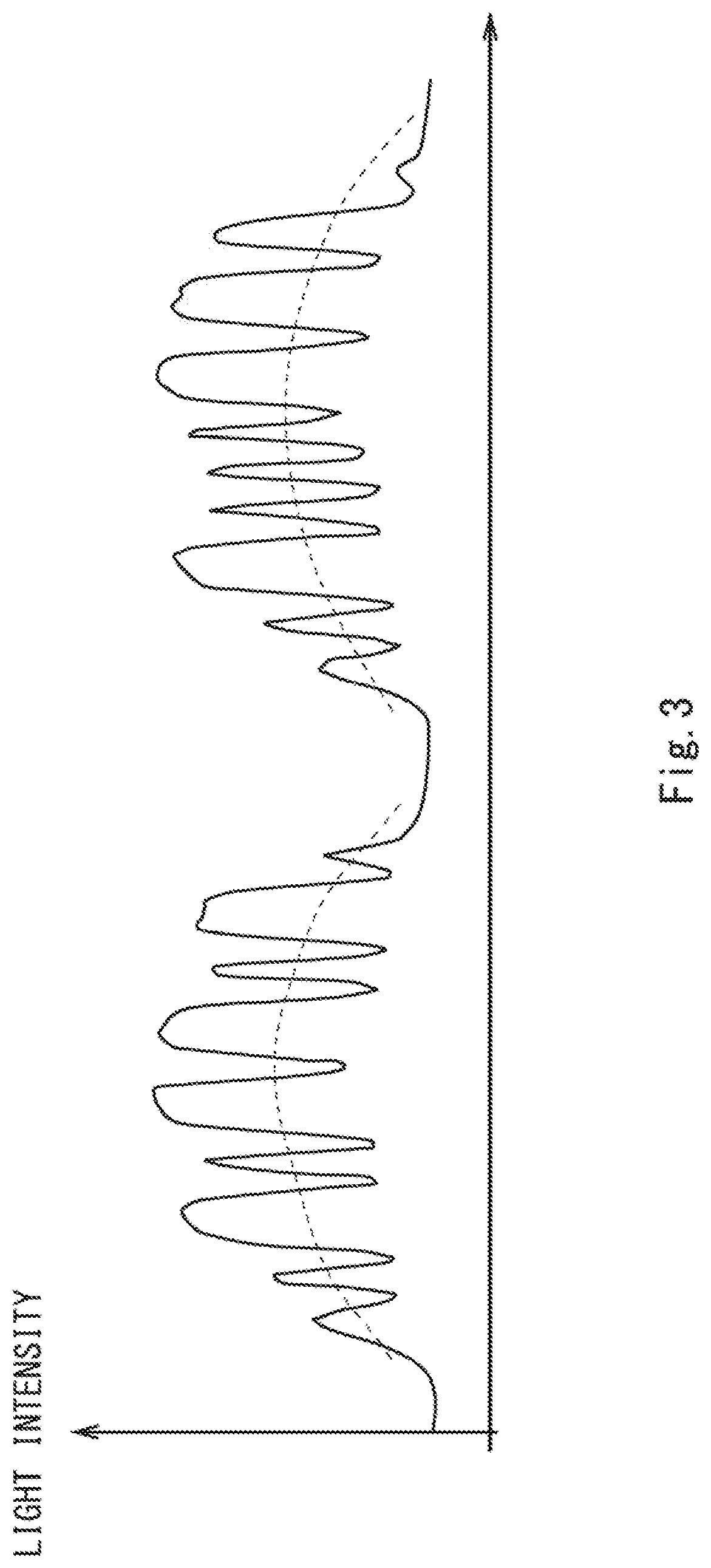Signal processing method for photoelectric encoder
- Summary
- Abstract
- Description
- Claims
- Application Information
AI Technical Summary
Benefits of technology
Problems solved by technology
Method used
Image
Examples
first exemplary embodiment
[0072]A first exemplary embodiment of the present invention relates to a signal processing method, for a photoelectric encoder, capable of correctly determining a bright pan and a dark part in a bright / dark pattern having distorted light intensity distribution.
[0073]A feature point of the first exemplary embodiment of the present invention is to “set an appropriate threshold”. Before the feature point is described, an example of a scale pattern 210 is described.
[0074]FIG. 5 is a scale pattern of a transmission-type photoelectric absolute encoder using a pseudo random code. To correctly acquire the absolute position from this scale pattern, it is necessary to correctly and accurately detect brightness (H) and darkness (L) of bits as many as possible.
Description of Scale Pattern
[0075]The scale pattern 210 shown in FIG. 5 is an absolute (ABS) scale pattern using an M-sequence code, which is one of pseudo random code sequences. When continuous N codes in an M-sequence code pattern are t...
second exemplary embodiment
[0100]Next, a second exemplary embodiment of the present invention is described.
[0101]The second exemplary embodiment is basically similar to the first exemplary embodiment, but the light intensity of a non-image-forming region is replaced with the average intensity of the adjacent image-forming regions in the second exemplary embodiment.
[0102]FIG. 13 is a flowchart showing a procedure of a quantization process in the second exemplary embodiment.
[0103]In the second exemplary embodiment, first, a bright / dark image is classified into image-forming regions and non-image-forming regions, and the image-forming regions and the non-image-forming regions is distinguished one by one by numbering them from the left.
[0104]An example of this is shown in FIG. 14.
[0105]The image-forming regions are sequentially distinguished as a 0th image-forming region, a first image-forming region, a second image-forming region, a third image-forming region, and so on from the left. Similarly, the non-image-fo...
third exemplary embodiment
[0110]Next, a third exemplary embodiment of the present invention is described.
[0111]The third exemplary embodiment is basically similar to the second exemplary embodiment, but an image-forming region is more finely divided to replace the light intensity of each non-image-forming region with the average intensity of its adjacent image-forming regions in the third exemplary embodiment.
[0112]FIG. 18 is a flowchart showing a procedure of a quantization process in the third exemplary embodiment.
[0113]In the third exemplary embodiment, a bright / dark image is classified into image-forming regions and non-image-forming regions, and the image-forming regions and the non-image-forming regions are distinguished one by one by numbering them from the left.
[0114]At this time, each image-forming region is further divided in half to distinguish the left side as “L” and the right side as “R”.
[0115]An example of this is shown in FIG. 19.
[0116]That is, the image-forming regions are distinguished as a...
PUM
 Login to view more
Login to view more Abstract
Description
Claims
Application Information
 Login to view more
Login to view more - R&D Engineer
- R&D Manager
- IP Professional
- Industry Leading Data Capabilities
- Powerful AI technology
- Patent DNA Extraction
Browse by: Latest US Patents, China's latest patents, Technical Efficacy Thesaurus, Application Domain, Technology Topic.
© 2024 PatSnap. All rights reserved.Legal|Privacy policy|Modern Slavery Act Transparency Statement|Sitemap



